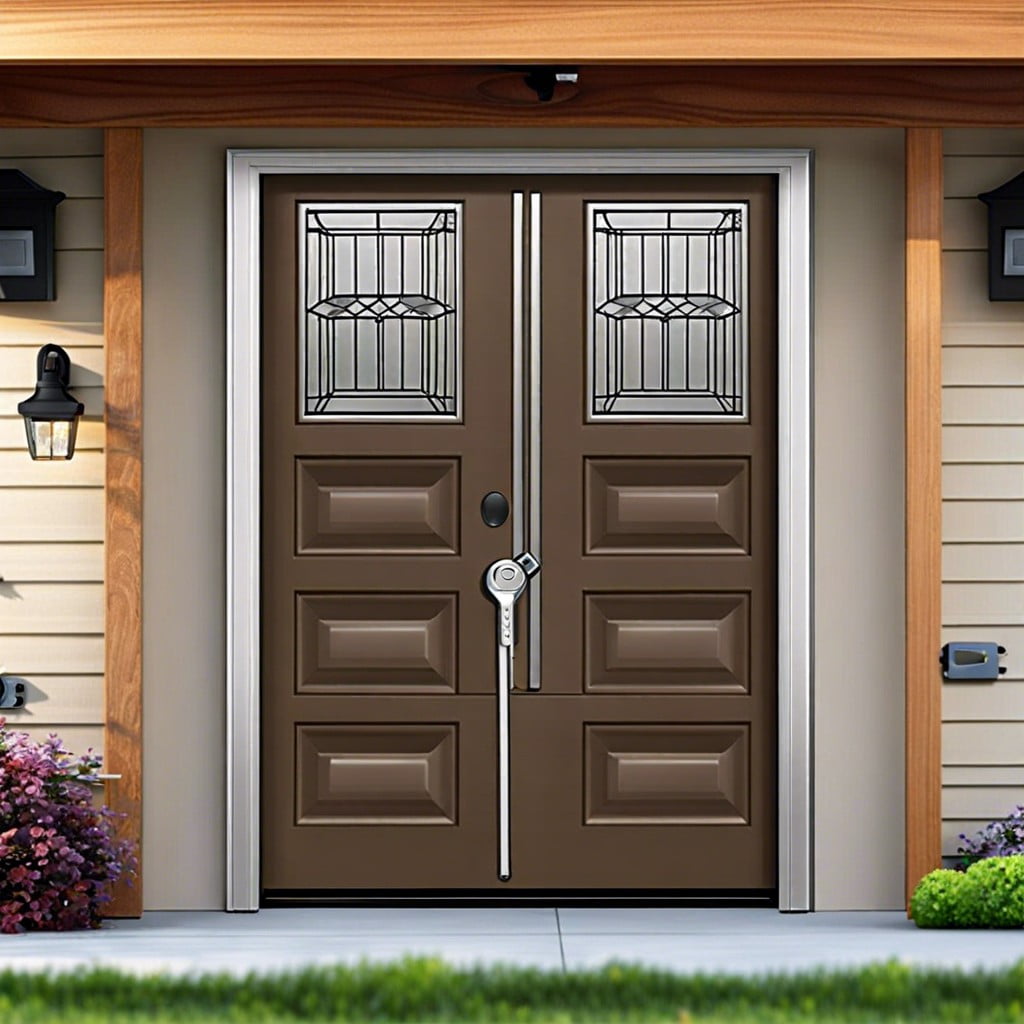Learn how to program your Chamberlain garage door keypad with straightforward steps for hassle-free access.
Key takeaways:
- Gather necessary tools and materials (ladder, battery, owner’s manual, pen, and paper)
- Set up the keypad (install batteries, find “Learn” button, enter PIN)
- Sync remote controls (find “Learn” button, enter code on keypad)
- Troubleshoot common programming issues (check batteries, review key sequence, ensure compatibility, adjust keypad placement)
- Utilize resources for further assistance (Chamberlain website, YouTube, online forums, local hardware stores)
Gathering The Necessary Tools And Materials

No one likes a mid-project interruption, especially when it’s an epic battle with a stubborn garage door keypad. Before you dive into the programming fray, arm yourself with a few essentials.
First, grab a ladder. Unless you’re a giant, those garage door openers tend to be annoyingly high up.
Next, get your hands on a fresh 9V battery. Dead batteries are about as useful as a screen door on a submarine.
Have your owner’s manual handy. It’s your trusty guide, though you probably won’t admit to actually reading it.
Finally, keep a pen and paper nearby. Trust me, you’ll want to jot down that new code unless you’ve got a memory like an elephant. And while you’re at it, maybe jot down a reminder to pick up more ice cream.
Now that you’re equipped like the MacGyver of garage door tech, it’s time to roll up those sleeves and get to work.
Setting Up The Keypad
Before you start pressing buttons like a cat at a keyboard, find a good spot for the keypad. Ideally, it should be within reach but away from the prying hands of little ones.
In a nutshell:
Remove the keypad cover to reveal the battery compartment. Install the batteries; fresh ones are best. Dodge the temptation to use the ones last meeting the TV remote.
Locate the “Learn” button on your garage door opener unit. This button is usually hiding in plain sight—often behind a light cover.
Press and release the “Learn” button. You’ve now got 30 seconds to program the keypad, so speed walk, don’t run.
On the keypad, enter a four-digit PIN of your choice, followed by the Enter button.
Voila! You’ve set up your keypad. High-five yourself, because let’s face it, programming gadgets feels a bit like taming a wily beast sometimes.
Syncing Your Remote Controls
Kick things off by grabbing your garage door remote. Make sure it’s within arm’s reach—proximity is key here!
Locate the “Learn” button on your garage door opener. Depending on the model, it could be hiding under a light cover—stealthy little thing.
Press and release that “Learn” button. You’ve got about 30 seconds to do a mad dash to your keypad before it stops listening, so don’t dilly-dally!
Enter your chosen 4-digit code on the keypad. Follow it up with the Enter button. Voilà! The opener should blink, beep, or perform some kind of celebratory dance to indicate success.
Test your work. Punch in the code again to make sure everything’s synced. If the garage door opens or closes, celebrate briefly—preferably with a fist pump. If not, no worries, troubleshoot away!
Troubleshooting Common Programming Issues
If your Chamberlain garage door keypad isn’t cooperating, don’t despair. Start by ensuring the keypad has fresh batteries. It’s amazing what a little juice can do.
Check the key sequence you’ve programmed. Even a small slip-up can mean the difference between an open sesame moment and frustration. It might be worth resetting the keypad and starting fresh.
Compatibility issues can also rear their ugly heads. Ensure your keypad model is compatible with your garage door opener. If it’s a mismatch, you’re just setting yourself up for heartbreak.
Examine the placement of your keypad. Keep metal objects and other electronic devices at bay, as they can interfere with the signal. Sometimes a little relocation can work wonders.
Lastly, if all else fails, consult the user manual or seek help from Chamberlain’s customer support. They’ve got the answers and might just save your sanity.
References
Chamberlain’s website is your first stop for official manuals and guides. They offer step-by-step instructions and troubleshooting tips. It’s like having a tech-savvy buddy in your back pocket!
YouTube is another goldmine. Many DIY enthusiasts have uploaded helpful videos demonstrating the programming process. Sometimes seeing it in action can make all the difference.
Online forums can be surprisingly useful. Fellow homeowners discuss their experiences and solutions, often providing that exact nugget of wisdom you might need.
Local hardware stores often have experts familiar with Chamberlain products. So, don’t hesitate to ask for help during your next visit.
Whether you prefer reading, watching, or chatting, resources are plentiful. Happy programming!